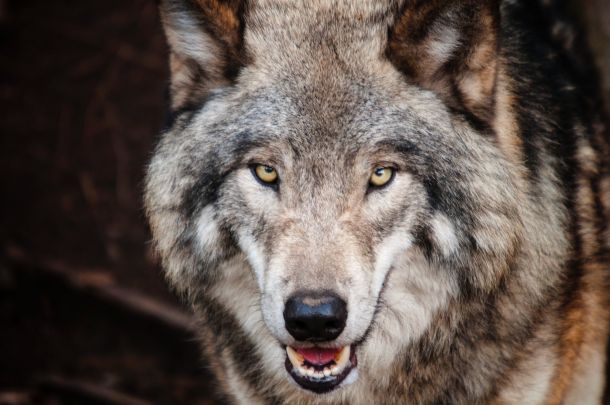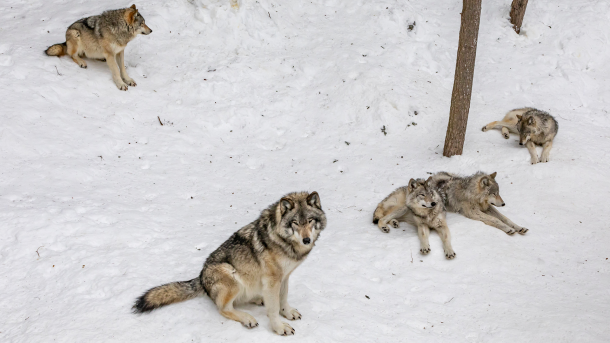
Watch Arctic Wolf Pack HERE.
Gray Wolf (Canis Lupus): the largest wild member of the dog family.
AKA: Timber wolf
Kingdom: | Animalia
Phylum: | Chordata
Class: | Mammalia
Order: | Carnivora
Family: | Canidae
Genus: | Canis
Species: | C. Lupus
Wolves and Mythology:

Photo by Eva Blue on Unsplash.
Size and Weight: A northern male wolf is about 6.6 feet long, including the bushy tail, and it stands about 30 inches tall at the shoulder. On average, it weighs about 100 pounds, but it can range from 31 to 143 pounds. Females average about 20 percent smaller than males.
The size of the wolf depends on its geographic location. The largest wolves are found in west-central Canada, Alaska, and across northern Asia. The smallest tend to be near the southern end of their distribution in the Middle East, Arabia, and India.
Fur: Fur on the upper body, though usually gray, may be brown, reddish, black, or whitish, while the underparts and legs are usually yellow-white. In the arctic region, light-colored wolves are common.
Diet: Wolves are natural-born predators and are well-equipped to take down prey. They have keen senses, large canine teeth, powerful jaws and the ability to run at 37 miles per hour.
Habitat: Wolves can be found from the tundra to the woods, forests, grasslands, or even deserts. Their presence is dependent largely on the availability of prey.
Geography: The gray wolf inhabits vast areas of the Northern Hemisphere, spreading from North America to Eurasia and into the Arctic regions.
Lifespan: Wolves can live up to 13 years in the wild, though few survive to that age. On average, they live from 6 to 8 years.
Pack Behavior: Gray wolves typically live in packs of 6 to 10 individuals, but the pack can include up to two dozen wolves. A pack is a family group with an adult breeding pair (the alpha male and alpha female) and their offspring at all ages. Wolves form strong social bonds with each other, allowing them to form the wolf pack.
Breeding: Wolves usually breed between February and April, typically between the alpha male and alpha female. The female will give birth to a litter of about 5 to 6 pups in the spring, following the two-month gestation period. The pups are born in a den consisting of a natural hole or burrow. They are cared for by all members of the pack and are the center of attention of the pack during the early months in spring and summer.
Conservation Status: According to the International Union for Conservation of Nature (IUCN), the gray wolf is considered of least concern.
Threats: Other than man, wolves have few natural enemies. Humans are the leading cause of deaths for wolves in most areas of the world. However, in areas with high wolf density and declining prey population, other wolves and starvation are major causes of death.
Additional Facts:
- There are between 5 and 24 subspecies of gray wolves in North America, 7 to 12 in Eurasia, and 1 in Africa.
- Wolves communicate with one another by vocalizations, scent-marking, and visual signaling, such as facial expression, body position, tail position.
- Howling is another form of communication It helps the pack stay in contact with one another. There is also evidence that howling strengthens social bonds among pack members.
- Wolves mark their territory with urine and feces to inform neighboring packs of their presence and to let them know that they should not intrude. Intruding packs are often killed by resident packs, yet they are accepted in some instances.
- Wolves are monogamous animals and stay with the same mate for life.
- In the continental United States, gray wolves were hunted to near extinction due to the threats they posed on human safety and livestock. Gray wolves were reintroduced to portions of the U.S., such as Yellowstone, during the 1990s. They had been absent in the region since the 1930s, and the reintroduction was part of a federal recovery plan.
Information is pulled from Encyclopedia Britannica and American Expedition.
